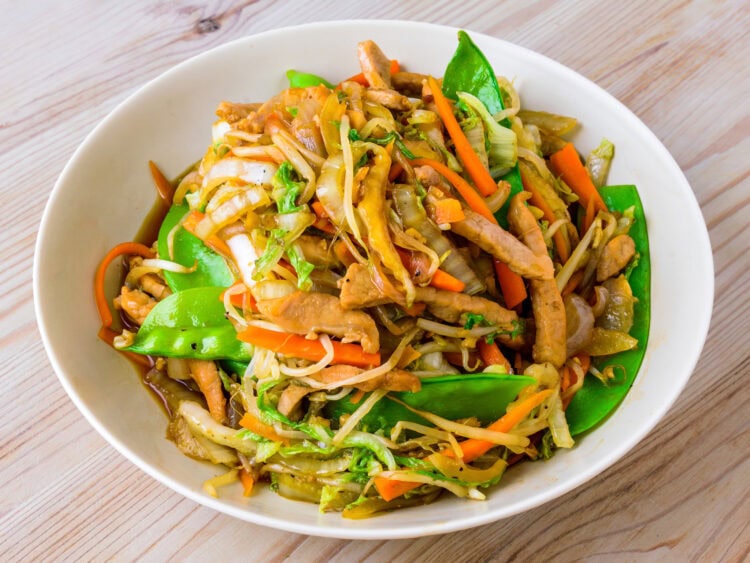An easy and quick traditional Japanese stir-fry recipe better than at a restaurant
For those who don’t want to bother with an overly sophisticated recipe, Yasai Itame seems to be the right compromise. Despite its simplicity, this recipe from Japanese cuisine remains very effective, delicious, and promised, not too heavy!
What is Yasai Itame?
In Japanese, the term “yasai” literally means “vegetables,” while “itame” means “stir-fry.” Make no mistake: indeed, Yasai Itame is considered a side dish that consists of a handful of vegetables stir-fried in a pan.
It includes carrots, snow peas, Chinese cabbage, bean sprouts… But also slices of pork. So no, it’s technically not a vegetarian dish, even though there are variants that are.
In Japan, Yasai Itame is a popular family dish. The advantage is that this recipe doesn’t require a lot of ingredients. And you don’t spend an eternity in the kitchen.
Some vegetables in the pan, pieces of meat coated in a marinade made of sake, soy sauce, and mirin, seasoning… and you’re done.
Often, we’ll use what’s left at the back of the cupboard or in the fridge, a bit like for Cantonese rice or yakimeshi.
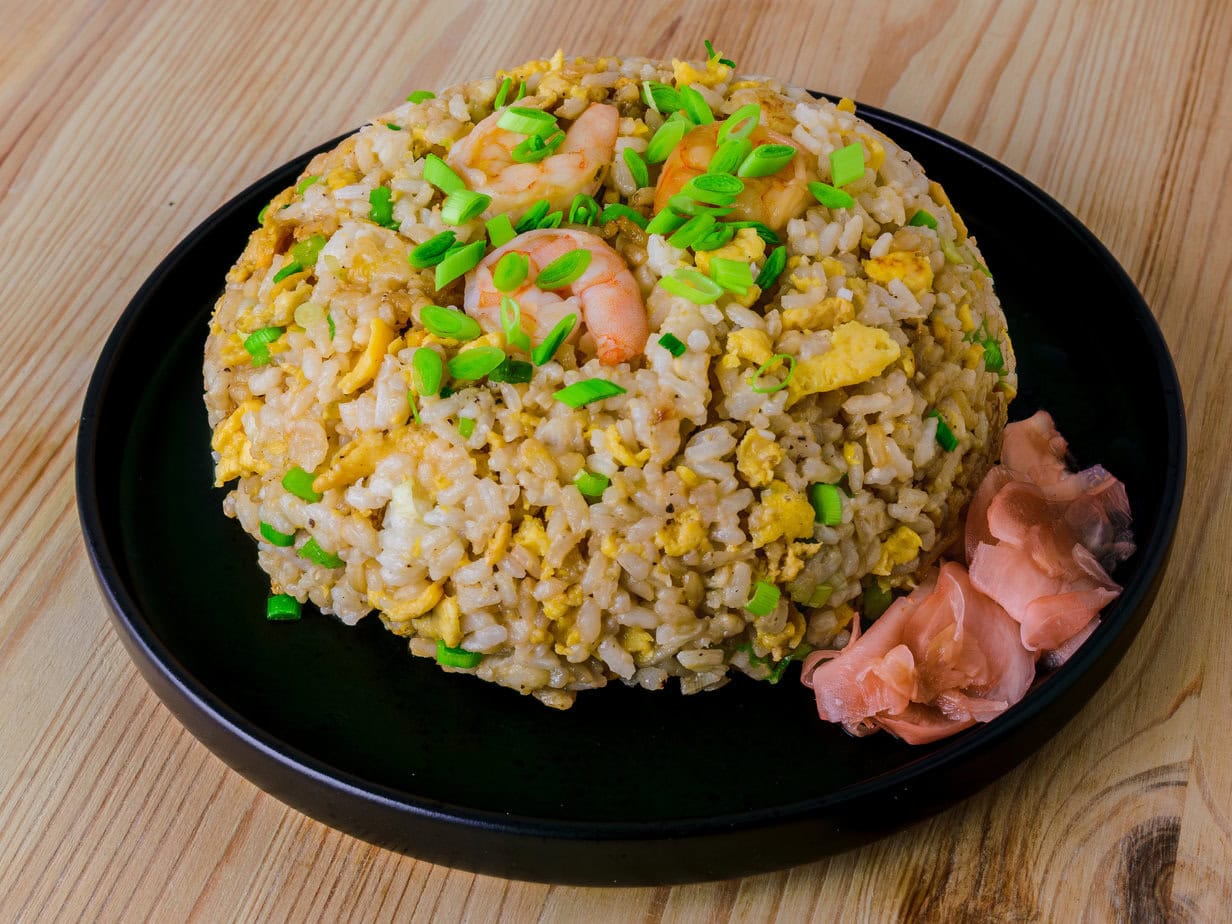
The origins of Yasai Itame?
We can’t really determine the exact origin of Yasai Itame, however it’s given the label of “Itamemono.” Hence the prefix “itame” that we find in the name of the dish, by the way.
In fact, “itamemono” is a name given to a cooking method that originally doesn’t come from Japan but from China, pioneer of wok cooking and stir-fries.
We can say that Yasai Itame is a mix of both cultures; created in Chinese cuisine therefore, and then adopted by Japanese cuisine. Just like ramen, gyoza, yakisoba or even chashu pork
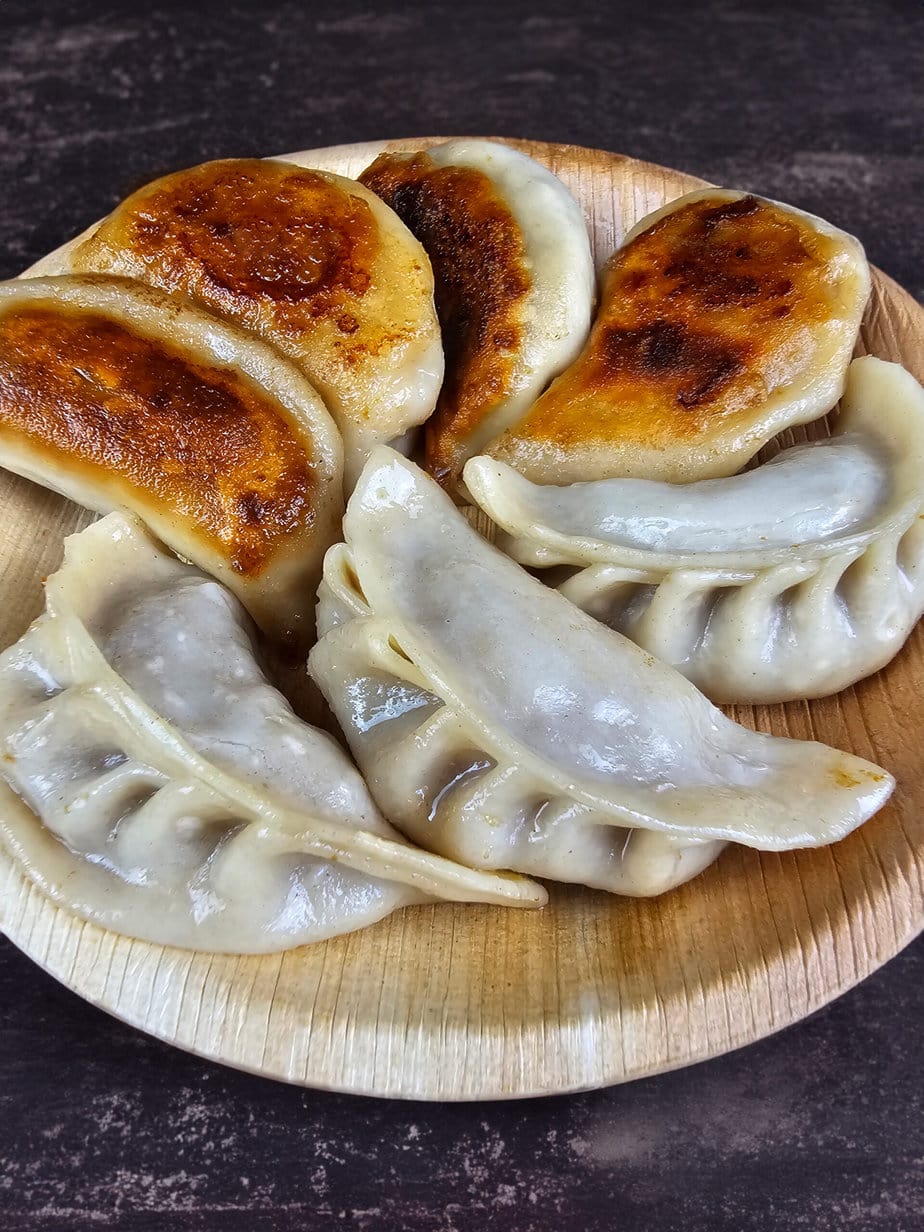
It’s said that this dish became popular in Japanese homes and canteens in the 1950s. This is also the case for many other dishes like Chukadon or Chanpuru…
The main ingredients of Yasai Itame
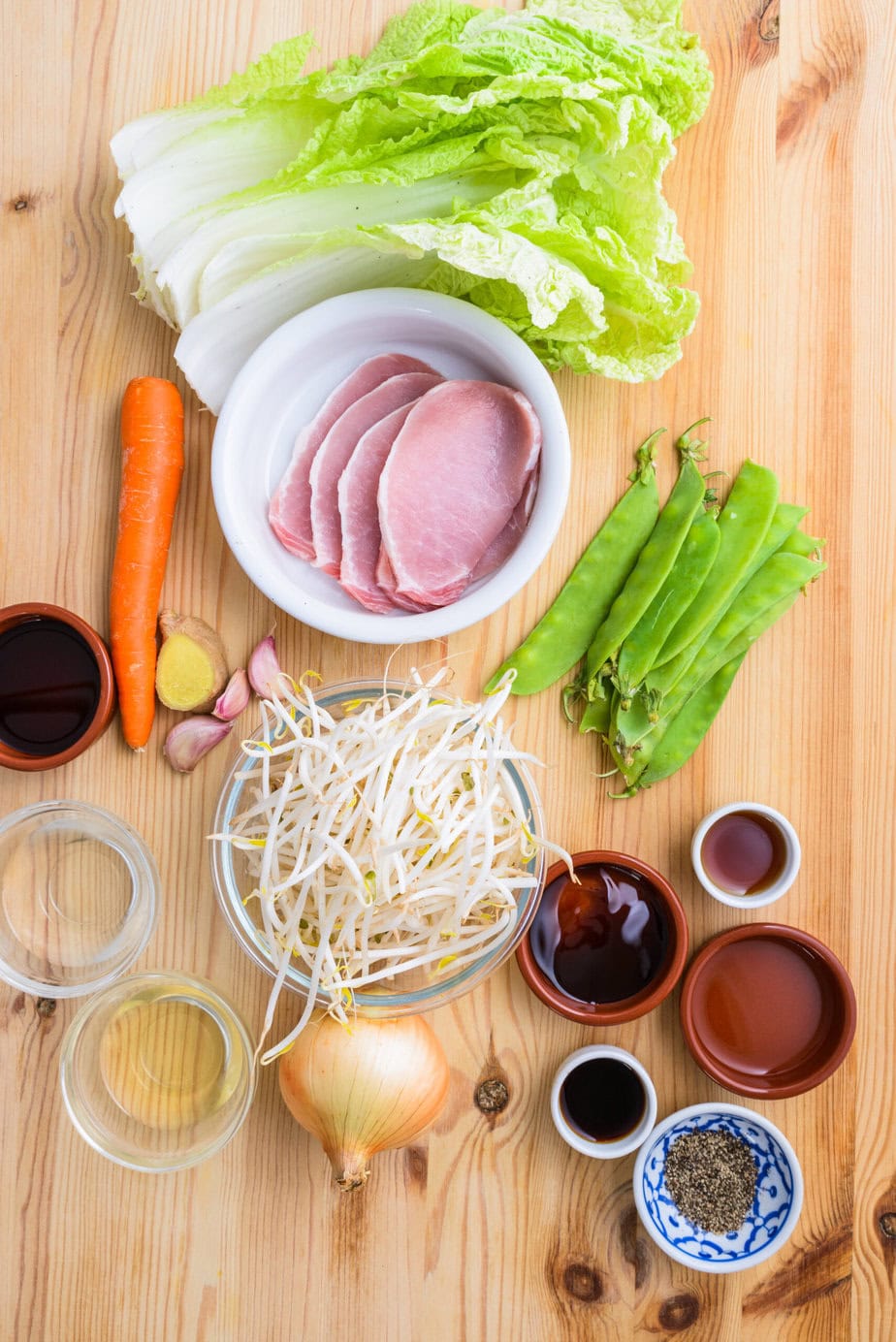
Pork: as I mentioned earlier, there are many variations of this dish. Some use pieces of chicken, beef, sometimes even shrimp. Some make it a vegetarian recipe. Personally, I prefer to use pork, which is more flavorful
Ginger: along with garlic, ginger adds a little aromatic and spicy touch. It immediately flavors the dish and gives it that Chinese cuisine taste.
Carrot: a bit of sweetness doesn’t hurt. To be consumed without moderation, especially when it’s in season!
Snow peas: it must be said that it’s a bit of the star vegetable of the dish. It’s not for nothing that we often find it in Asian cuisine. It’s delicate and slightly sweet, in short, super suitable for this kind of dish.
Chinese cabbage: it’s a bit different from traditional green cabbage. It’s even milder and crunchier than the latter and adds a significant touch of freshness.
Bean sprouts: Raw or cooked, they add crunch. They are therefore versatile, and that’s also why they are interesting, especially in Yasai Itame.
Mirin: essential for the marinade, even though it’s somewhat similar to sake in taste, it brings a unique sweet flavor.
Sake: typical in Japanese cuisine, sake is a rice wine that can be drunk but also used in cooking. It has a velvety taste with floral notes and is slightly less sweet than mirin.
Light soy sauce: ideal for stir-fried vegetable dishes such as Yasai Itame
Sesame oil: used as a seasoning, it gives a slight toasted nutty flavor. Use sparingly to avoid masking other flavors.
Oyster sauce: being a slightly thicker sauce than others used in this recipe, it will act as a binder in addition to adding a sweet and savory touch.
Tips for a successful Yasai Itame
To be efficient and serve a successful Yasai Itame, I advise you to prepare all your ingredients and seasonings in advance.
Stir-frying has a very instantaneous nature, and you risk overcooking (or even burning) one ingredient or another by stopping midway to chop vegetables or slice meat. Better safe than sorry.
Also, make sure to wash your ingredients in advance or remove any trace of moisture, otherwise the vegetables would lose their crispness when cooking.
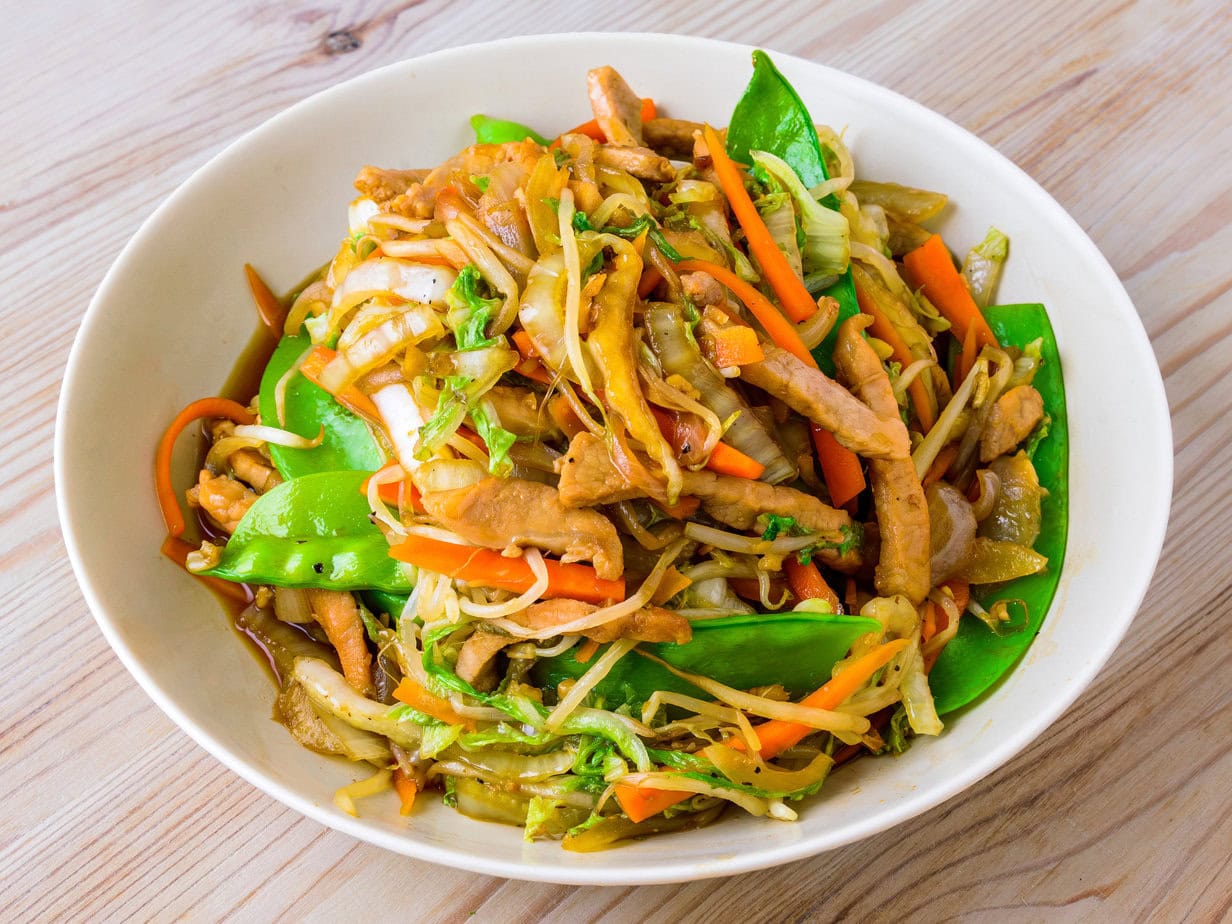
Yasai Itame – Japanese Veggie Stir-Fry
Equipment
Ingredients
- 200 g pork thinly sliced into small strips
- 3 cloves garlic finely chopped
- 1 small piece of ginger finely chopped or grated
- 1 onion sliced
- 0.5 carrot julienned
- 15 g of snow peas
- 200 g of Chinese cabbage very thinly sliced
- 100 g of bean sprouts
Marinade
- 1 teaspoon of mirin
- 1 teaspoon light soy sauce
- 1 teaspoon of sake
Seasonings
- 1 teaspoon of mirin
- 1 teaspoon light soy sauce
- 1 teaspoon sesame oil
- 1 teaspoon of oyster sauce
- Black pepper to taste
Instructions
- Marinate the pork for 10 min200 g pork, 1 teaspoon of mirin, 1 teaspoon light soy sauce, 1 teaspoon of sake

- Sauté the garlic and ginger in a pan until fragrant.3 cloves garlic, 1 small piece of ginger
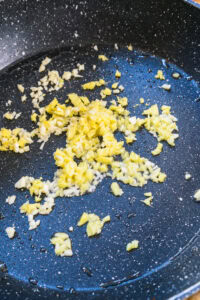
- Add the pork to the pan and cook until it’s almost fully cooked.

- Add the onion and cook until tender.1 onion
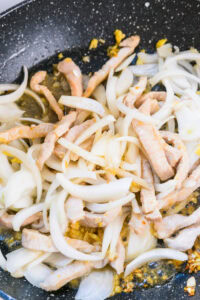
- Add the carrots and cook until tender.0.5 carrot
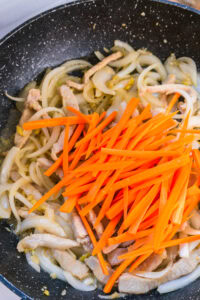
- Add the bean sprouts, sauté for 1 min100 g of bean sprouts
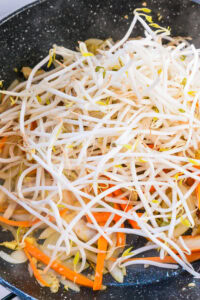
- Add the snow peas and cabbage, then stir-fry for 5 minutes.15 g of snow peas, 200 g of Chinese cabbage
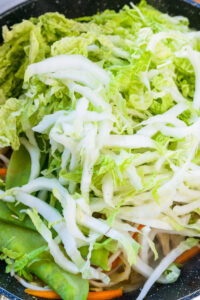
- Add the seasonings. Sprinkle with black pepper and mix.1 teaspoon of mirin, 1 teaspoon light soy sauce, 1 teaspoon sesame oil, 1 teaspoon of oyster sauce, Black pepper
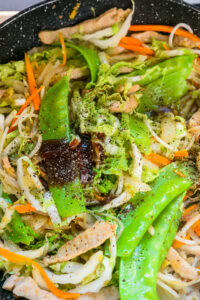
Notes
Nutrition
Culinary sources
I used the recipe from Just One Cookbook as a base, but the seasonings and marinade have been significantly modified
